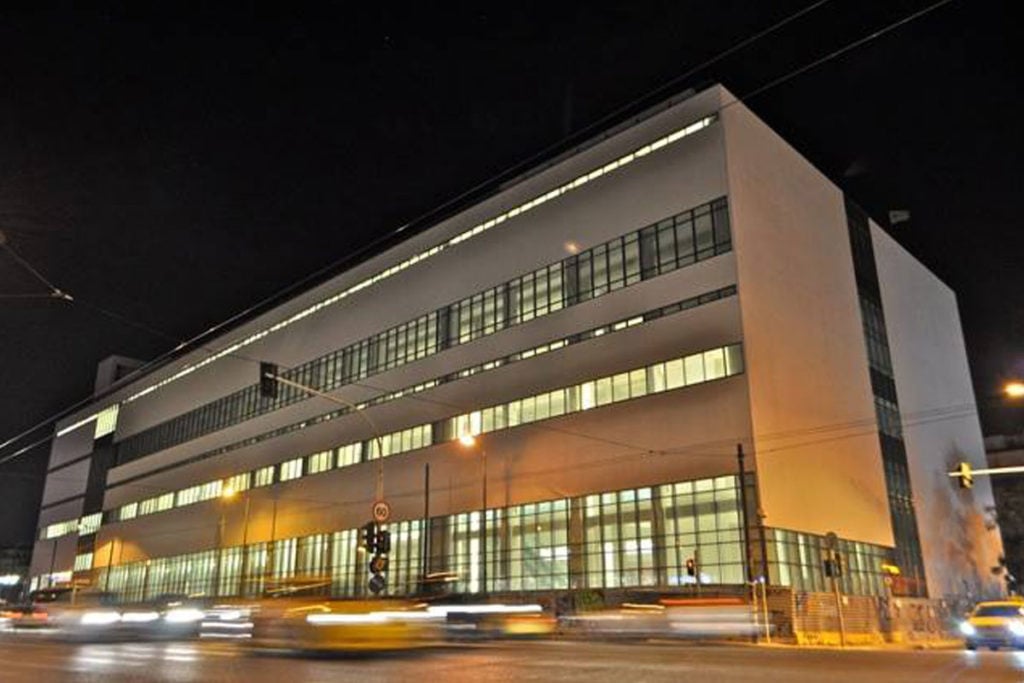Art World
The National Museum of Contemporary Art, Athens Partially Opens After a 12-Year Wait
The Greek museum's development was plagued by legal, political, and bureaucratic difficulties.

The Greek museum's development was plagued by legal, political, and bureaucratic difficulties.

Caroline Elbaor

After a saga lasting more than twelve years, The National Museum of Contemporary Art, Athens (EMST) has finally opened its doors—if only partially. On October 31, EMST held a soft opening for the first large-scale exhibition ever to be staged in the museum’s newly reconstructed home at the site of the former Fix brewery. A years-long series of events had previously rendered the building closed to the public—and empty of art—since 2003.
“Urgent Conversations: Athens-Antwerp,” which is scheduled to run through January 29 of next year, marks the largest exhibition to be publicly presented in the new venue. Despite this, the show is housed only in the galleries allocated for temporary exhibitions. Thus, the museum’s permanent collection—made up of over 1,000 works by Greek and foreign artists, including Lucas Samaras, Bill Viola, Nan Goldin, and Shirin Nasat—continues to remain off-limits to the public.
The entirety of the museum is slated to open in Fall of 2017, according to The Art Newspaper, though the museum has yet to confirm.
EMST’s reconstruction struggled to conclude for years as the government continually changed hands, leading to arguments over regulations and administration. “Unfortunately, our politicians are not art lovers,” Katerina Kostis, EMST’s director, told Al Jazeera. “I think this is something that should have happened years ago.”
“Urgent Conversations: Athens-Antwerp” is the collaborative curatorial effort of Kostis and Bart De Baere, director of M HKA in Antwerp. Described by the press release as the product of the “necessity of cultural dialogue on a global scale, also within multifaceted Europe,” the exhibition pairs the works of primarily Greek and Belgian artists in an aim to ask the question, “How can we live together?”
“[Contemporary art] is not about solutions, about finished things,” said de Baere. “It’s more about a table where we can continue to reflect.” The same, it seems, can be said about EMST itself, as the process of a full public unveiling continues to remain uncertain.